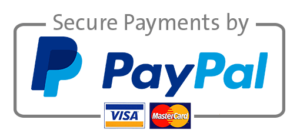Attached below is the case analysis and here are the questions to be answered:
Review the case study and create a comprehensive case analysis report in a 4-page (double spaced) Word document.
Case Study Questions:
What do you recommend?
Compute the expected value of perfect information.
Suppose Bob does not know the chance of the outcomes of the market (being poor, average, good, or excellent), what do you recommend with a decision-making methodology of Minimax Regret?
Case Study
Ski Right Corp.
After retiring as a physician, Bob Guthrie became an avid downhill skier on the steep slopes of
the Utah Rocky Mountains. As an amateur inventor, Bob was always looking for something new.
With the recent deaths of several celebrity skiers, Bob knew he could use his creative mind to
make skiing safer and his bank account larger. He knew that many deaths on the slopes were
caused by head injuries. Although ski helmets have been on the market for some time, most
skiers consider them boring and basically ugly. As a physician, Bob knew that some type of new
ski helmet was the answer.
Bob’s biggest challenge was to invent a helmet that was attractive, safe, and fun to wear.
Multiple colors and using the latest fashion designs would be musts. After years of skiing, Bob
knew that many skiers believe that how you look on the slopes is more important than how you
ski. His helmets would have to look good and fit in with current fashion trends. But attractive
helmets were not enough. Bob had to make the helmets fun and useful. The name of the new ski
helmet, Ski Right, was sure to be a winner. If Bob could come up with a good idea, he believed
that there was a 25% chance that the market for the Ski Right helmet would be excellent. The
chance of a good market should be 35%. Bob also knew that the market for his helmet could be
only average (30% chance) or even poor (10% chance).
The idea of how to make ski helmets fun and useful came to Bob on a gondola ride to the top of
a mountain. A busy executive on the gondola ride was on his cell phone trying to complete a
complicated merger. When the executive got off the gondola, he dropped the phone and it was
crushed by the gondola mechanism. Bob decided that his new ski helmet would have a built-in
cell phone and an AM/FM stereo radio. All the electronics could be operated by a control pad
worn on a skier’s arm or leg.
Bob decided to try a small pilot project for Ski Right. He enjoyed being retired and didn’t want a
failure to cause him to go back to work. After some research, Bob found Progressive Products
(PP). The company was willing to be a partner in developing the Ski Right and sharing any
profits. If the market was excellent, Bob would net $5,000 per month. With a good market, Bob
would net $2,000. An average market would result in a loss of $2,000, and a poor market would
mean Bob would be out $5,000 per month.
Another option for Bob was to have Leadville Barts (LB) make the helmet. The company had
extensive experience in making bicycle helmets. Progressive would then take the helmets made
by Leadville Barts and do the rest. Bob had a greater risk. He estimated that he could lose
$10,000 per month in a poor market or $4,000 in an average market. A good market for Ski
Right would result in $6,000 profit for Bob, and an excellent market would mean a $12,000
profit per month.
A third option for Bob was to use TalRad (TR), a radio company in Tallahassee, Florida. TalRad
had extensive experience in making military radios. TalRad could also make the helmets, and
Progressive Products could do the rest of production and distribution. Again, Bob would be
1
taking on greater risk. A poor market would mean a $15,000 loss per month, and an average
market would mean a $10,000 loss. A good market would result in a net profit of $7,000 for Bob.
An excellent market would return $13,000 per month.
Bob could also have Celestial Cellular (CC) develop the cell phones. Thus, another option was to
have Celestial make the phones and have Progressive do the rest of the production and
distribution. Because the cell phone was the most expensive component of the helmet, Bob could
lose $30,000 per month in a poor market. He could lose $20,000 in an average market. If the
market was good or excellent, Bob would see a net profit of $10,000 or $30,000 per month,
respectively.
Bob’s final option was to forget about Progressive Products entirely. He could use Leadville
Barts to make the helmets, Celestial Cellular to make the phones, and TalRad to make the
AM/FM stereo radios. Bob could then hire some friends to assemble everything and market the
finished Ski Right helmets. With this final alternative, Bob could realize a net profit of $55,000 a
month in an excellent market. Even if the market was just good, Bob would net $20,000. An
average market, however, would mean a loss of $35,000. If the market was poor Bob would lose
$60,000 per month.
DISCUSSION QUESTIONS
1. What do you recommend?
2. Compute the expected value of perfect information.
3. Suppose Bob does not know the chance of the outcomes of the market (being poor, average,
good, or excellent), what do you recommend with a decision-making methodology of Minimax
Regret?
2
Purchase answer to see full
attachment








Recent Comments